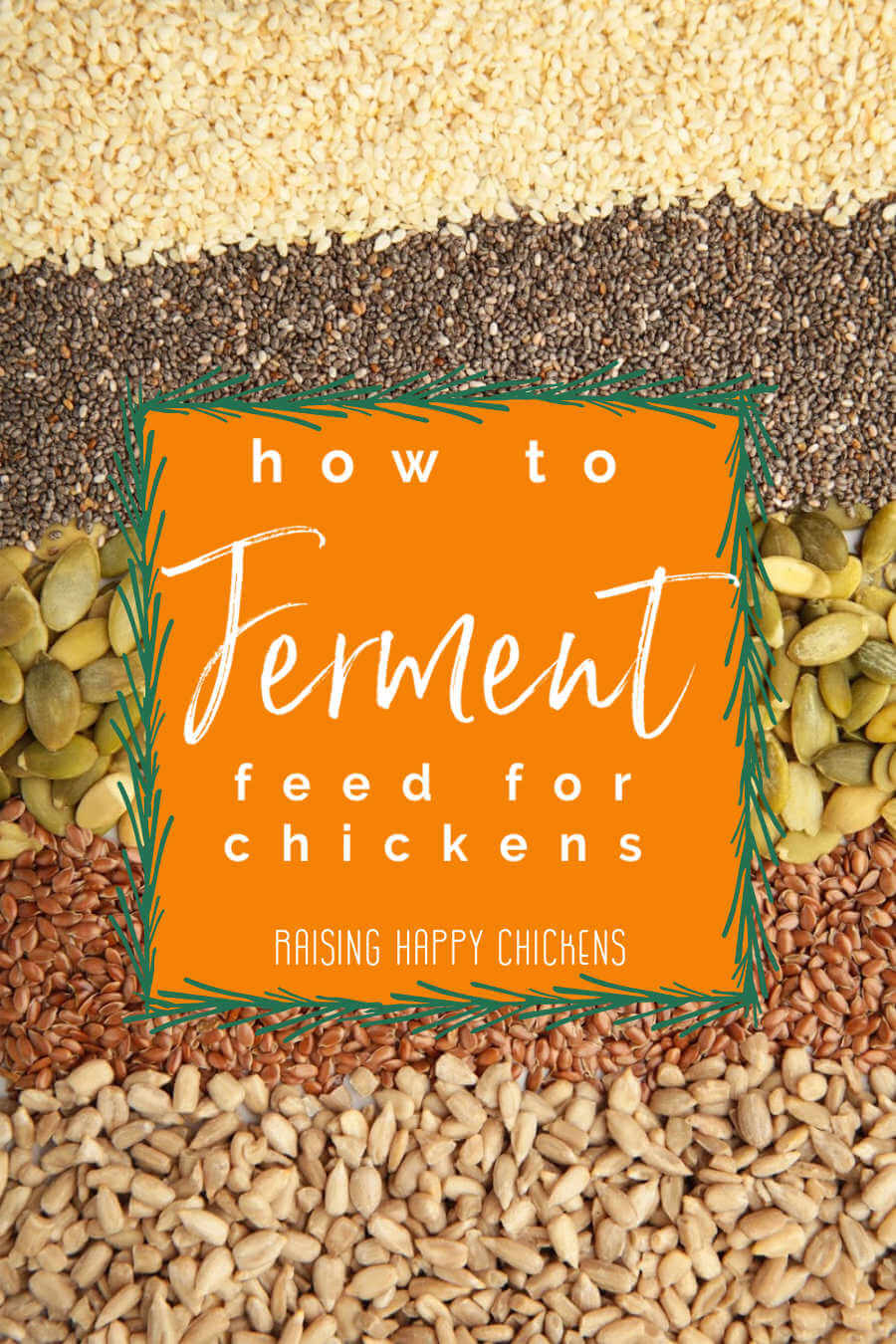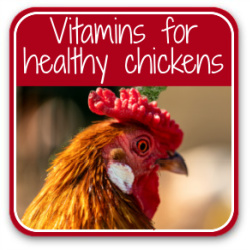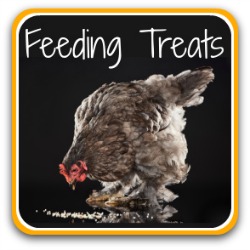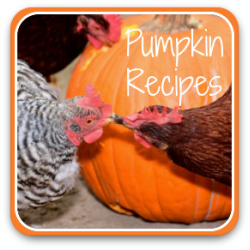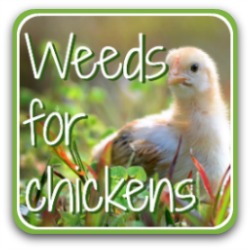Fermenting chicken feed in four easy steps.
You may have heard that fermentation is good for your chickens, but you're not sure how to do it. This article will show you.
Happily for us, there's a lot of research about the benefits of fermentation for chickens, and evidence about exactly which fermented foods have the most benefits.
Why?
Antibiotics have been used in commercial chicken farming for many years to counteract the poor conditions poultry is kept in.
Europe has already legislated against this widespread use of antibiotics, recognising the danger of overuse leading to the growth of drug-resistant bacteria.
And throughout the world, natural alternatives to antibiotics are increasingly sought by both commercial and backyard chicken keeping.
A part of food conservation for centuries, fermentation is one of those alternatives. It has consequently hit the headlines again because of that growth in interest of backyard chicken keepers wanting a healthier, more natural, less drug-dependent life for their flock.
So what exactly is fermentation?
It's basically simply soaking feed in liquid, to naturally release vitamins and probiotics. If you'd like more information about the specific benefits of fermenting food for your flock, see my article here.
Sprouting or fermenting - which process works best?
Sprouting seeds for chickens is also known to be an excellent natural way of enhancing the nutrient content of the feed. High in protein and low in fat, they're an inexpensive, healthy, DIY treat for your chickens.
Sprouting is also a virtually foolproof method. Nothing can really go wrong. Even if you leave your sprouts over time, they simply turn into fodder.
So why bother fermenting?
- You'll probably find that your chickens much prefer fermented food to sprouts. Think candy versus lettuce.
- Fermenting doesn't just release vitamins. It creates them.
- The process of fermenting also creates probiotics. And probiotics are critical for boosting your flock's immune systems.
So, let's get fermenting some chicken feed!
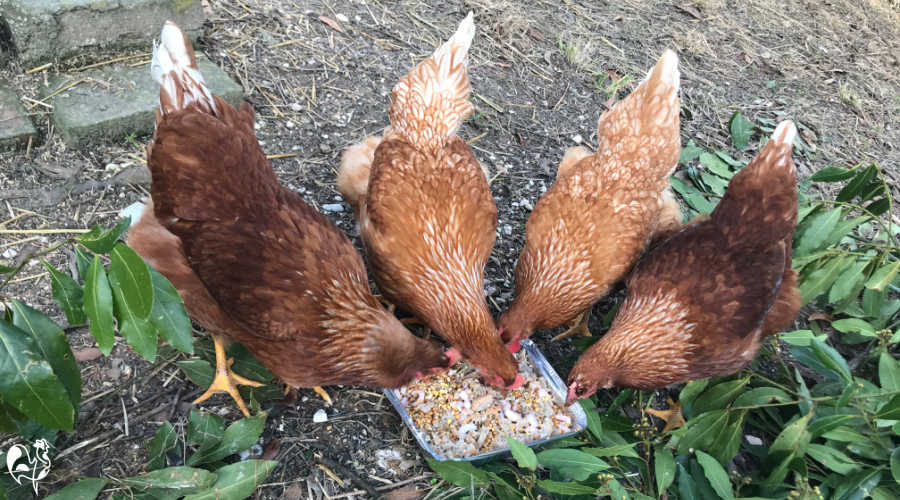 A Valentine's Day treat for my Red Stars, made from wild bird feed, a few mealworms and some left-over prawns.
A Valentine's Day treat for my Red Stars, made from wild bird feed, a few mealworms and some left-over prawns.If you purchase a product through links on this page, I may receive a small commission at no extra cost to you. I only recommend products I have bought (or would buy) myself, and which I believe will genuinely benefit you. You can read my full disclosure policy here.
Step 1: Choose the foods you want to ferment.
Which foods are best to use when fermenting chicken feed?
You'll only use some of these ingredients, not all of them! I tend to use whatever I have in my store cupboard.
The basis for the fermentation is your usual chicken feed, supplemented with any of the other ingredients you have to hand.
If you're using fermented feed for chicks, do not use a layer feed. Make the fermented feed with their own chick food.
How much to use depends entirely on how many chickens you have! I would suggest about half a cup per chicken, per day.
Feed and grains.
 Use more mixed grain than pellets or crumble where possible.
Use more mixed grain than pellets or crumble where possible.- Even if you have nothing else, use your usual chicken feed, whether that's pellets, crumble or a grain mix.
- Pellets and crumble, although they work, expand and become quite gelatinous and difficult to strain. So if you use them, try to add other seeds or grain into the mix.
- Other grains which are known to be beneficial are wheat, barley, buckwheat and organic oats.
- If you have some to hand, you can add a handful of a wild bird food mix.
- Quantities are not set in stone. Try to use no more than 30% pellets or crumble, just to keep the mix from becoming too mushy.
Legumes and seeds.
- Either just one or a combination of a few of these can be added as they are into the mix.
- Sunflower and pumpkin seeds are very high in protein and vitamins. If you buy them, make sure they're organic and unsalted.
- Why not grow sunflowers yourself? It makes the fermented feed even less expensive - and you get some pretty flowers too! See my page here for details.
- Lentils, mung beans, chia and flax seeds are all good for both sprouting and fermenting. Again, either grow them yourself or use a good quality, non-processed brand.
Vegetables and fruit.
- Studies have shown that adding vegetables to fermenting feed has added benefits, including an enhanced immune system and longer life.(1)
- Tinned or frozen sweetcorn and peas can be added if you don't have fresh. Allow frozen veg to come to room temperature before adding, or you'll slow down the fermentation process.
- I generally find harder veg like carrots need to be grated, or chopped into small pieces. Adding them whole means the process takes longer.
- In season, use any fruits you may have. Chopped apples and pears, including the cores (but with the pips removed) are high in vitamins and low in fat, so a good choice. Citrus fruits should be avoided - they can make the mix too acid.
Herbs and flowers.
- If you grow your own herbs, adding some leaves to the mix is fine. I use a small amount of chopped up bay (because we have a massive bay tree in the chicken run!), mint and basil.
- I always add a clove or two of garlic. It's known to be a great immune booster for chickens and, contrary to popular belief, using it in these small quantities does not make eggs taste of garlic!
- Remember too the benefits of plants for chickens. Adding some marigold or nasturtium petals is another way of adding nutrients without fat.
- Finally, using edible weeds keeps costs down and nutrients up! Dandelions, nettles, clover and chicory are all good choices.
Other ingredients.
- I'm often asked whether rice can be used. It can, but its nutritional value is generally very low because it is so highly processed.
- Some people add crushed eggshells. They don't need to be baked to go into a fermenting mix.
Water.
- The water you use should be filtered, or come from a natural spring. Tap water which has chlorine added will kill the healthy bacteria and prevent the process from working.
- If you can't get filtered or spring water, use tap water but allow it to stand for about 48 hours before using it.
- Use water at room temperature, not chilled and not hot!
Starter culture.
Using a starter culture is not necessary. Spontaneous fermentation uses bacteria naturally present in the atmosphere to begin the process.
However, this can take some time to get going. For a quicker start, either use some liquid left from a previous fermentation (see below), or add some liquid drained from a jar of a fermented food like sauerkraut.
Step 2: Choose your container.
- Don't use plastic or stainless steel. The fermentation process can cause the materials to leech into the feed.
- Glass or food grade stoneware is best. This crock pot is specifically made for fermenting and you can choose from two sizes, depending on how many chickens you have.
- You'll need a loose-fitting lid, which this container already has.Don't worry if your chosen container doesn't. A piece of muslin or a light cloth is fine. Some people use a panty-hose stretched across the top.
Step 3: Start fermenting your chicken feed!
Day 1.
- Put your chosen foodstuffs into the container and mix well together. Use as much feed as fills the container no more than two thirds.
- Add enough un-chlorinated water to cover the dry ingredients by at least two inches.
- Stir well together.
- Add the lid, but make sure it is loose. Don't screw it down tight or you may find your fermented feed splatters all over the walls!
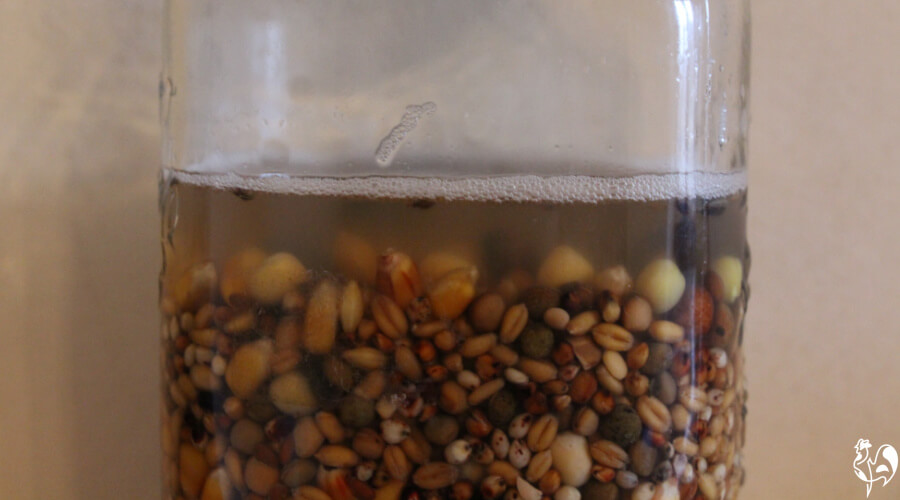 I use a small Kilner jar if I only want to ferment a small amount of feed.
I use a small Kilner jar if I only want to ferment a small amount of feed.- Be aware that the grain will soak up liquid very quickly. Make sure you check the container regularly - at least once every couple of hours on day 1 - and add more water if necessary.
- Never let the water fall below the level of the feed. It must stay submerged, or the grain will go mouldy and you'll need to throw it away.
- Keep your container in a dark, cool place. Don't stand it in direct sunlight.
Day 2.
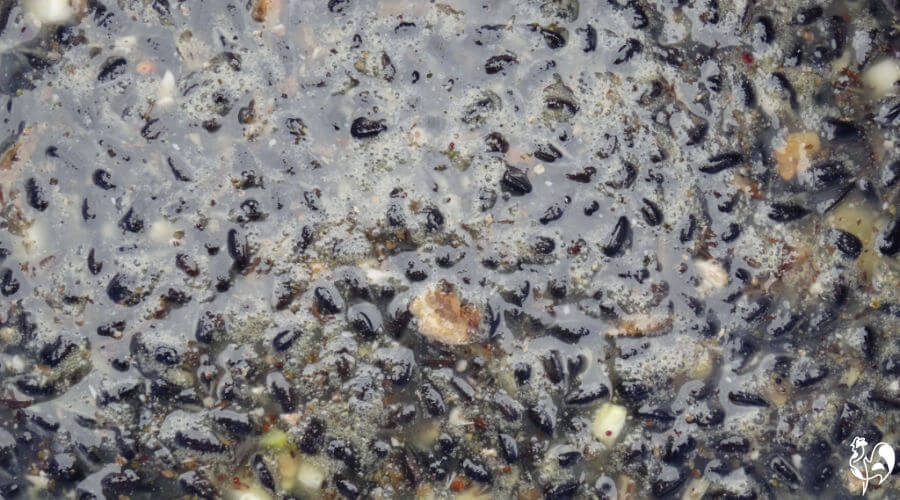 This batch had a heavy dose of sunflower seeds!
This batch had a heavy dose of sunflower seeds!- By day 2, your feed should have started merrily bubbling away.
- Keep stirring, at least 3 times per day, and make sure the water is still above the feed.
- The smell now should be pleasant. If it starts to smell like alcohol, or it just smells plain bad, stop and throw it away. What we're aiming for is lacto-fermentation, not the alcohol fermentation that produces beer!
Day 3: Your chicken feed fermenting should be finished today!
- Bear in mind, the time fermentation takes will depend on your situation. If you're in the tropics, it will take less time than if you're in the middle of a cold Ontario winter!
- If you've used pellets or mash, your feed should now be about the consistency of porridge.
- You're now ready to treat your flock!
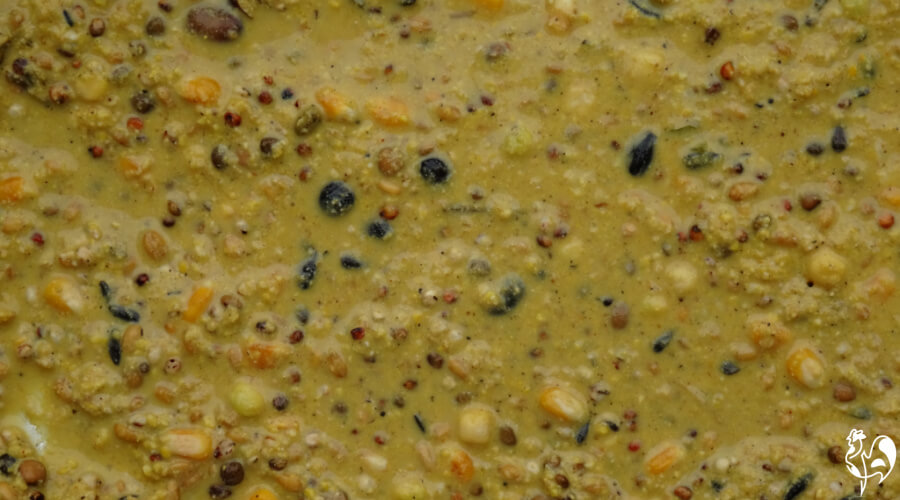 Fermented food - this used a high percentage of mash, so looks like porridge!
Fermented food - this used a high percentage of mash, so looks like porridge!Step 4: Drain, feed, repeat!
Straining the liquid.
- Strain the liquid from the feed but don't throw it away! Drain it into another container and leave it to one side.
- Do not feed if the fermented food smells "off", smells of alcohol or has grown mould. Throw it away and start again.
How much to feed?
- This is trial and error. Don't leave fermented food out for long: no longer than thirty minutes, and fifteen is probably better.
- Leaving it longer will attract flies and mould, especially in warm weather. As well as harming your chickens, that will inevitably attract rats and mice.
Try some backslopping!
- Backslopping is simply keeping the liquid from the fermentation you've just done, and using it to start the next batch.
- Because it already contains some of the good bacteria needed to begin the process, this time it will start to ferment more quickly.
- Simply add more grain, top up with more water and off you go again!
- If you have a larger flock, you could use three or four containers so that you always have some fermented chicken feed available. Simply start each batch off one or two days after the one before.
And finally...
That's it! There is no more to it.
So if you've always thought you might like to ferment some chicken feed but been a bit anxious that it sounds very complicated, don't let the thought stop you!
It's one of the most natural, easily made, non-processed, nutritious feeds you can offer your flock.
It will lower your feed bill, increase the quality of your chickens' eggs, lessen the likelihood of disease – and best of all, your flock will love you for it!
Once you get the hang of it, you will never want to stop!
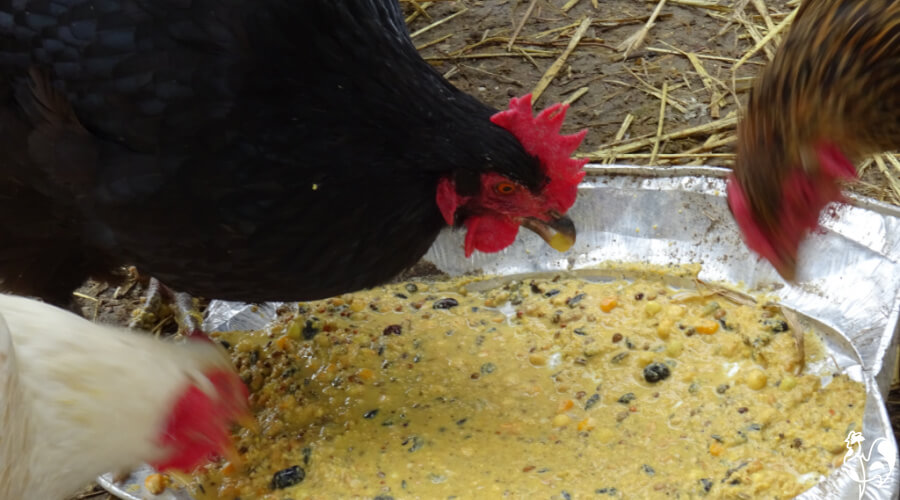 Three of my hens enjoying their fermented treat.
Three of my hens enjoying their fermented treat.If you found this page helpful, you'll like these too!
Sources.
A lot of "facts" you'll find on the internet are people's individual views, based on inaccurate information repeated from poor quality sources.
The information I provide in this article and others is based not just on my own experience, but on evidenced facts from scientific, peer-reviewed research and highly respected and experienced poultry keepers such as Gail Damerow.
Some of the sources I have used in this article are these.
1. Steenfeldt, S, et al: Effect of feeding silages or carrots as supplements to laying hens on production performance, nutrient digestibility, gut structure, gut microflora and feather pecking behaviour. Pub. Journal of British Poultry Sciences, 2007.
2. Engberg et al: Fermented feed for laying hens: effects on egg production, egg quality, plumage condition and composition and activity of the intestinal microflora. Pub U.S. National Library of Medicine, March 2009.
3. 2. Beal, Niba et al: 'Potential of bacterial fermentation as a biosafe method of improving feeds for pigs and poultry'. Pub. African Journal of Biotechnology, May 2009.
